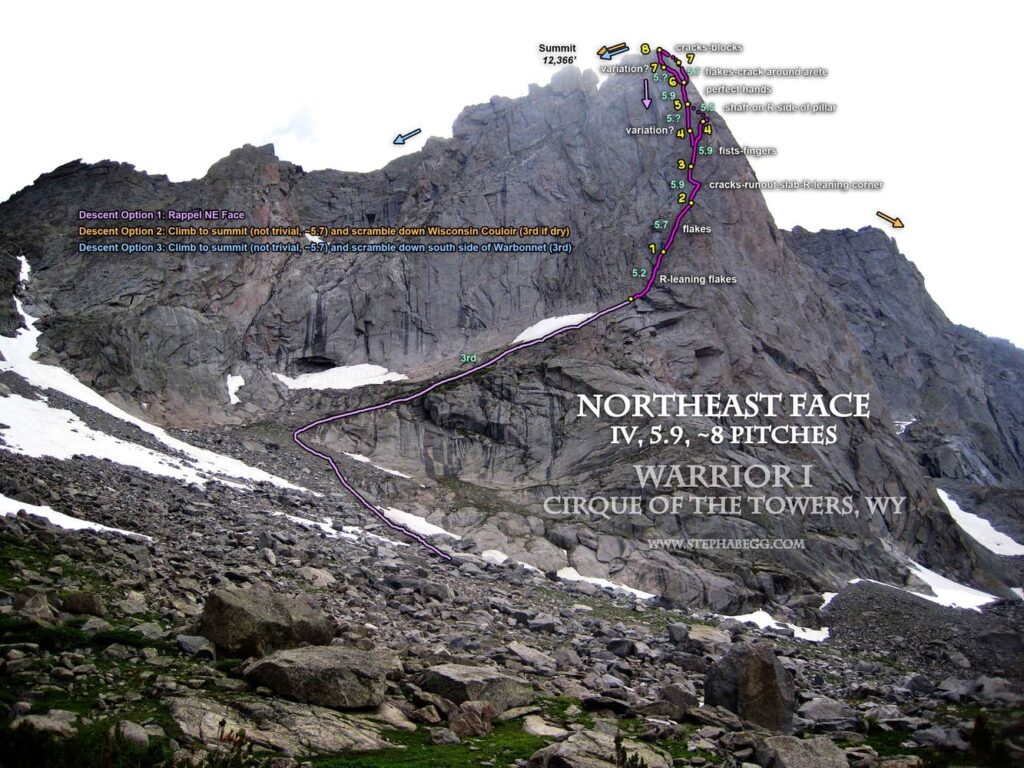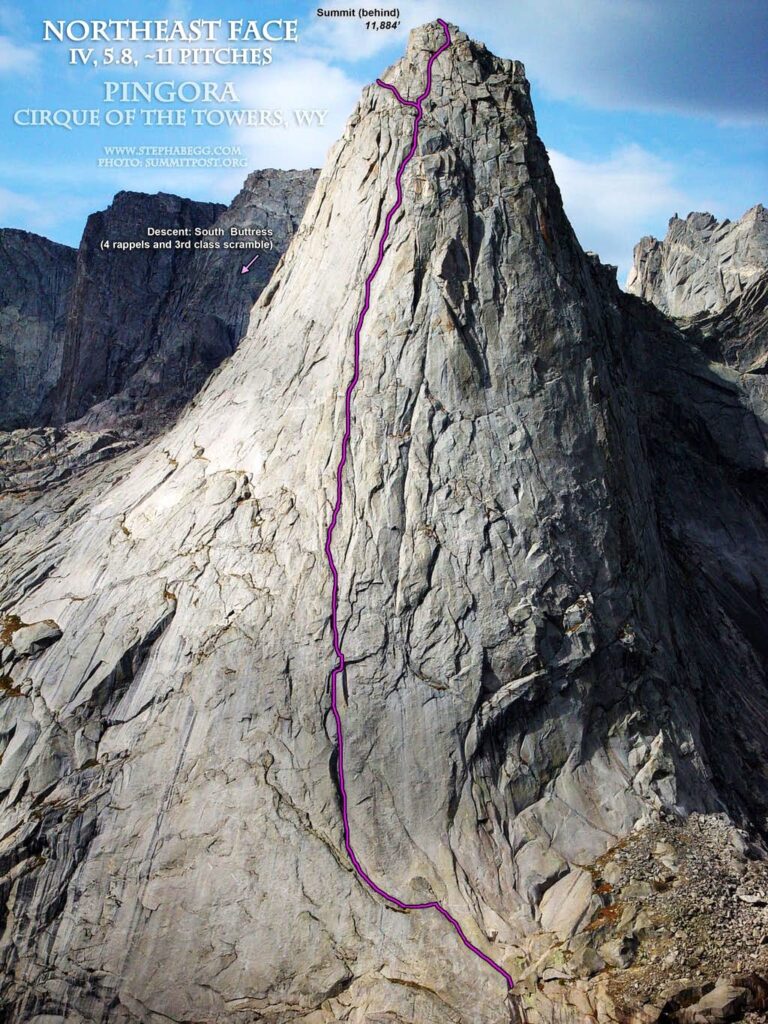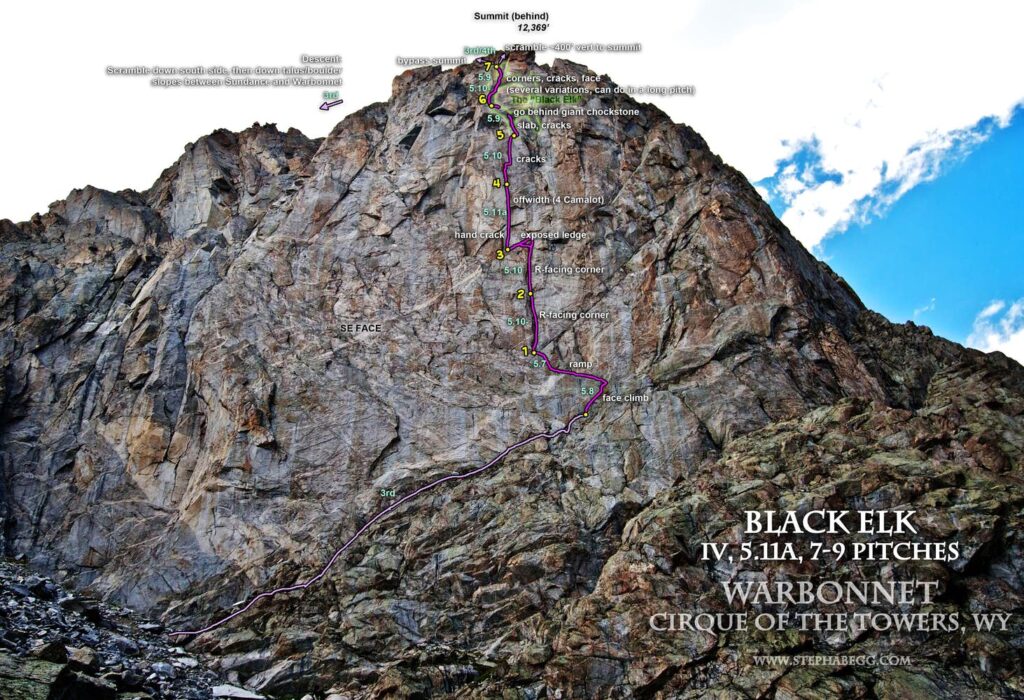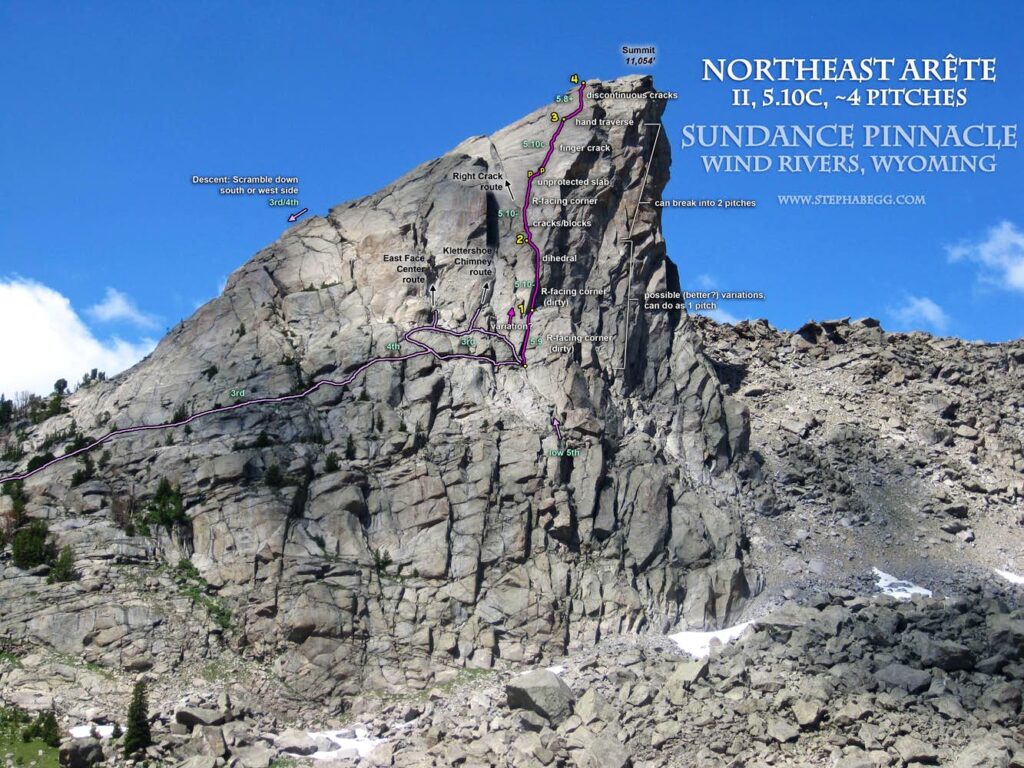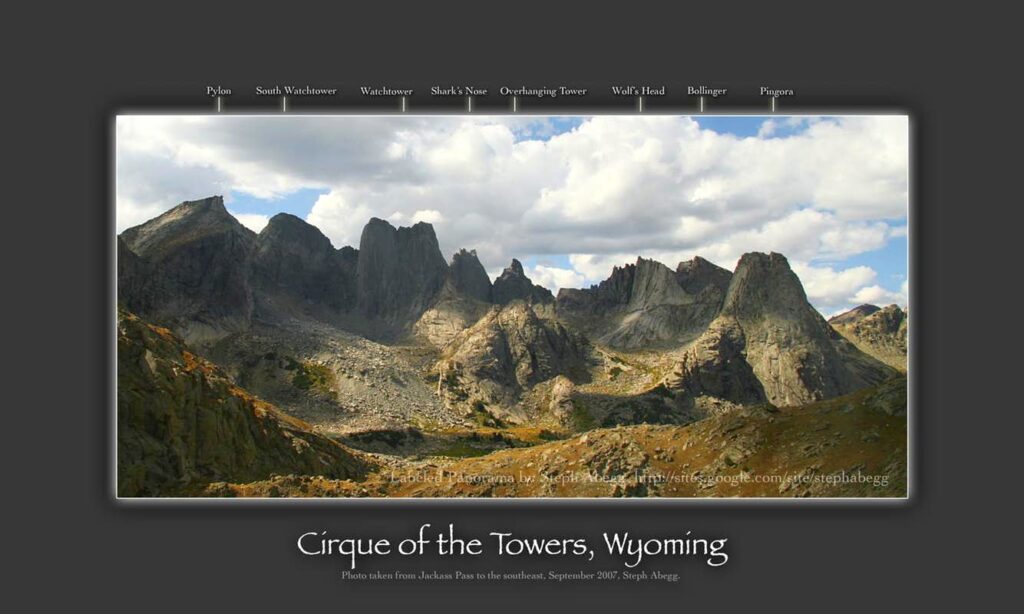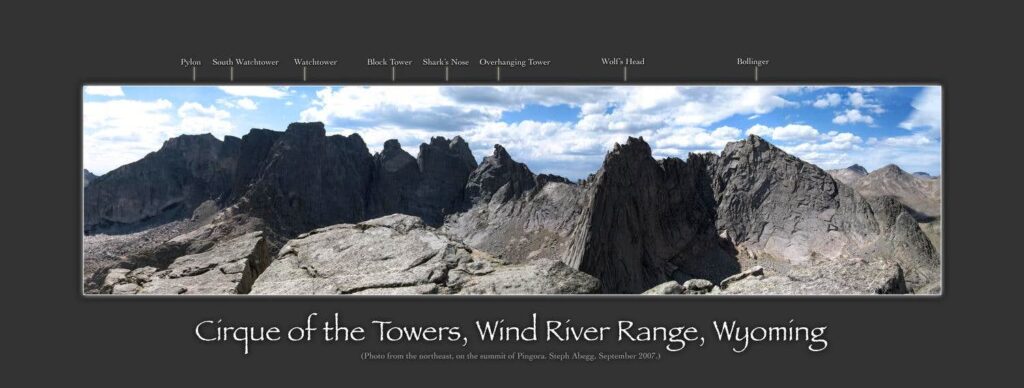The Cirque of the Towers in Wyoming's Wind River Range had captured my attention this summer. In
July, I spent eight days in the Cirque. It had been a fun and rather successful trip where the weather was great and I climbed six Cirque classic moderate routes in six days. Nonetheless, I finished the trip feeling a bit disappointed, since for reasons I still don't quite understand my partner and I did not climb or even attempt any of the routes we had planned to climb. So a return trip to the Cirque before the summer ended was definitely on my mind.
Since the Spring, I had been corresponding with climber Dow Williams about planning a climbing trip. I put the bug in his ear about a trip to the Cirque, naming some grade IV routes like Warrior I's Northeast Face (a classic "Beckey adventure route") and Warbonnet's Black Elk ("hardest route in the Cirque") and Feather Buttress ("wildest 5.9 pitch in America"). Dow was interested and we set aside some dates to do a few of the harder routes in the Cirque.
It's always iffy when you nail down trip dates well in advance of any reliable weather forecast, but we were lucky and nailed a five-day weather window between thundershower systems. On the first day of our trip, we hiked into the Cirque and established camp below the northeast side of Warrior I. For some reason, I had it in mind that this would be a good camp for Black Elk as well, which we figured would be our first objective while we were fresh. But (doh!) the better camp had been a mile back just off the trail before Arrowhead Lake. So we quickly adjusted our plans and decided to climb the
(Climb 1:) Northeast Face (IV, 5.9, ~8 pitches) of WARRIOR I as our first climb of the trip. This turned out to be a good choice — a nice 5.9 warm-up with enough route-finding challenges to make it a non-trivial undertaking. The key with this route is to stay on route and then it's a great climb. For our second climb of the trip, we decided it logistically made sense to choose a route in the Cirque before moving camp and tackling Black Elk. We tossed around the idea of climbing Feather Buttress on Warbonnet, but ultimately decided against it due to our lack of route beta and the shady aspect of the route (temperatures were cold in the shade, especially if windy). Since Dow had never been to the Cirque, we decided to run up the
(Climb 2:) Northeast Face (IV, 5.8, ~11 pitches) of PINGORA, a Fifty Crowded Classic that features sustained and fun crack systems and is a must-do climb of the area. Despite arriving at the base of the route to discover three parties already queued for the second pitch, we were on top of Pingora in just over three hours. This gave us plenty of time to pack up and move camp to below the base of the southeast side of Warbonnet, where we could sit and stare at the next day's objective:
(Climb 3:) Black Elk (IV, 5.11a, ~9 pitches) on WARBONNET. We were mostly worried about the infamous wide crux 5.11a pitch, since we had brought only two size 4 Camalots, whereas various sources suggested the need for four or five cams of this size. Sure enough, we found two size 4 Camalots to be woefully insufficient for the crux pitch, forcing us to break the pitch into three short pitches. But apart from this pitch (which was good, just quite burly and a bit inefficient with our rack), the climb was superb. It was my favorite route and certainly the prize of the trip. The next day, we hiked out. But a mile from camp, we couldn't resist dropping our packs on the trail climbing just one more thing: the
(Climb 4:) Northeast Arête (II, 5.10c, ~4 pitches) of SUNDANCE PINNACLE, whose gleaming face beckoned in the morning light. This was a fun and rather spicy adventure with a mellow descent. Satiated with climbing for the day, we shouldered our packs and hiked the remaining six miles out to the trailhead. It was a phenomenal trip—four Cirque-area classics (three of them grade IV) in four days, wow! Thanks Dow for being a great climbing partner and taking all of the hard leads so I could kick back and enjoy my role as photographer.
This page provides a trip report for our four climbs in and around the Cirque.

